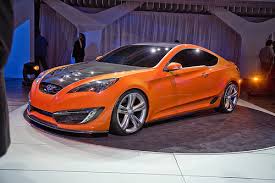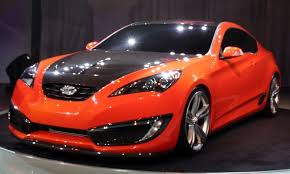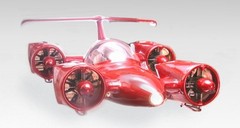
BMW has released the official details and images of the new Rolls-Royce Ghost (aka RR4), the new model series in the company’s ultra-luxury brand. Visually, the model remains mostly unchanged from its concept debut at the Geneva Motor Show last March.
Power comes from a new 6.6L V12 twin-turbo engine making 563-hp with a maximum torque of 575 lb-ft. 0 to 60 mph comes in just 4.7 seconds with a top-speed electronically governed at 155 mph. The engine is mated to a 8-speed ZF automatic gearbox. For those of you wondering, the Rolls-Royce Ghost manages an estimated fuel-economy of 17 mpg.
The Rolls-Royce Ghost will make its world debut at the 2009 Frankfurt Motor Show later this month and will be priced between €200,000 and €300,000 when it goes on sale. Buyers will have a choice of 12 exterior colors, each of which can be contrasted by an available Silver Satin bonnet.
2011 Rolls-Royce Ghost:
Press Release:
ROLLS-ROYCE GHOST
Autumn 2006, Paris motor show: Rolls-Royce Motor Cars announced that work had begun on a new model series. The new car would be in production and on sale by the turn of the decade. The only other facts confirmed at that stage were that it would be smaller than the Phantom saloon and priced somewhere between €200,000 and €300,000 before tax. Speculation about its style and specification began almost immediately…
Little was seen of the new car, codenamed RR4, until the spring of 2008, when Rolls-Royce released the first official sketches. The styling was instantly recognisable as a Rolls-Royce, although less traditional than previous models. At the time Chief Designer, Ian Cameron, said, “The RR4 has a more informal presence than the Phantom models with a greater emphasis on driving. In design terms this is expressed through its slightly smaller dimensions, yet with powerful, purposeful proportions. It is a true and uncompromising Rolls-Royce in every sense.”
As sightings of secret development models on the road increased, Rolls-Royce Motor Cars unveiled 200EX, the experimental forerunner to Ghost, at the Geneva motor show in March 2009. An instant hit, 200EX bore the trademark Rolls-Royce design cues but in altogether more compelling fashion. It was a clear statement of intent.
What the design team was seeking to create was a modern Rolls-Royce that achieved a new dynamism but remained true to its luxurious heritage. They had found inspiration in contemporary furniture, architecture and yachts but also in the spirit of the 1930s – that sense of adventure and endeavour – which they wanted to capture in the character of this new car.
“200EX is a modern execution of timeless Rolls-Royce elegance, breaking with some areas of tradition but retaining the core values that make our marque unique,” said Chief Executive Officer Tom Purves. “We expect the more informal design to broaden the appeal of Rolls-Royce Motor Cars, attracting people who appreciate its fusion of refinement, new technology and contemporary style.”
After the show, 200EX embarked on a world tour, during which further information about the forthcoming production model became available. It would be powered by a new 6.6 litre V12 unique to the marque, delivering 563 bhp with extraordinary performance figures. It would ride on an intelligent air suspension system offering peerless ride and dynamics. And it would be called Ghost.
“Ghost is one of the most revered names in automotive industry,” said Tom Purves. “It evokes images of adventure and technical innovation. The first cars to bear the Ghost name were known not only for impressive dependability and refinement but also great flair and style.”
Following the overwhelmingly positive reaction to 200EX during its travels, very few changes were made in the transition to the production Ghost – a tribute to the remarkable achievements of Ian Cameron’s and Helmut Riedl’s design and engineering teams.
In September 2009, the new Rolls-Royce Ghost was formally launched to the world.

The company says the Rolls-Royce 200EX is a design study for a contemporary 4-door sedan that shows the direction for the Ghost, a new model series that enters production in 2009.
2010 Rolls-Royce Ghost Preliminary Specifications
The Basics
Vehicle Type: premium large car
Drivetrain (CG estimates)
Drive wheels: rear
Engine: 6.6-liter V12
Horsepower: 500
Torque: 500 lb-ft
Transmission: 8-speed automatic
Dimensions (CG estimates)
Wheelbase: 129.7 inches
Length: 212.6 inches
Width: 76.7 inches
Height: 61.0 inches
Base curb weight: 5,150 pounds























